Historical Trends Leading to Millionaire's Row
Six significant events and trends
When the first house was built on Millionaire's Row in 1902, Washington had been a state for only 13 years. There were great opportunities to be had in providing materials and services to the nascent state, and the early residents of the street made their fortunes doing so. As the population increased, so did the interest in developing the suburbs and establishing world-class parks. Here are six specific historical trends or events without which Millionaire's Row would not exist as it does today.
1. Harvesting the Pacific Northwest's Natural Resources
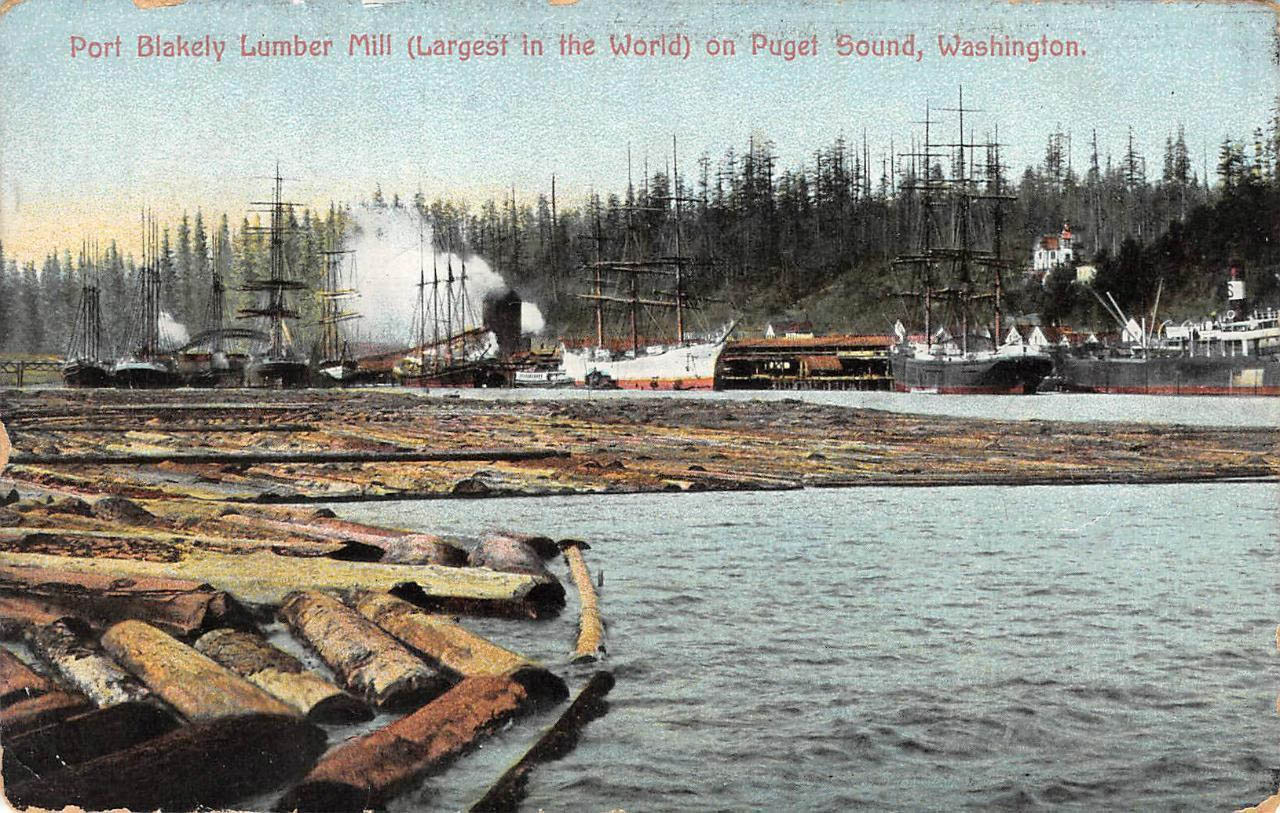
A great amount of the wealth created in Washington State at the end of the 19th Century and the beginning of the 20th Century was directly related to harvesting the region's natural resources. The wealth that allowed the creation of Millionaire's Row would not have existed without this historical trend. Five of the street's early residents were successful lumber tycoons (Chester F. White, Thomas Bordeaux, Joseph Bordeaux, Charles H. Cobb, David E. Skinner), while two gained affluence serving the lumber industry (Cyrus F. Clapp and Edward P. Ederer). Four gained affluence by supporting the fishing industry (David Skinner, William Edris, Andrew Weber and again, Edward P. Ederer). One gained his fortune by owning a stone quarry (Thomas Russell), and another gained prominence by serving the mining industry (Fred Rice Rowell). Seven gained affluence, at least partially by selling and/or developing land, and associated real estate (James A. Moore, Cyrus F. Clapp, Robert A. Tripple, David Whitcomb, William Edris, Julius Shafer, Samuel H. Hedges) – actually twelve if one adds in the 14th Avenue East Metropolitan Building Company cabal (Chester F. White, Charles H. Cobb, Elbridge A. Stuart, David E. Skinner, Thomas Bordeaux)! Also agriculture is often considered to be a natural resource (or closely associated with natural resources), and two made their fortunes in that industry (Elbridge A. Stuart, Henry Kleinberg). Some individuals are listed multiple times, because the capitalists of 14th Avenue East saw opportunity everywhere, and grabbed it. As an aside, a more obvious way that harvesting natural resources led to the creation of Millionaire's Row was that the clear-cutting of the trees on Capitol Hill in the 1880s enabled it to be later developed into a residential area.
2. Servicing the Klondike Gold Rush
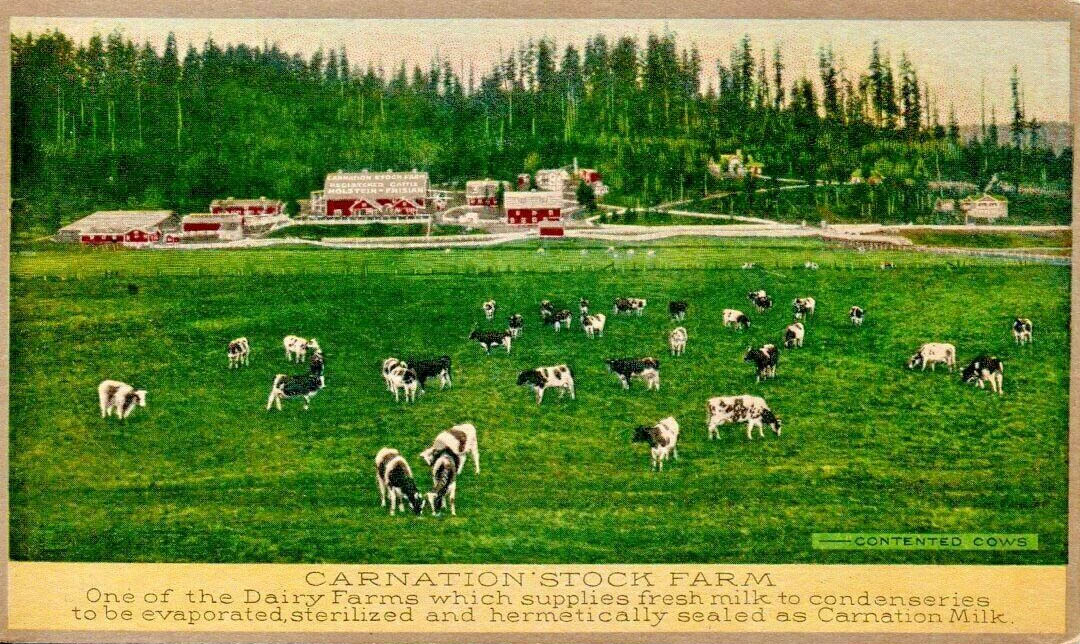
While most of the wealth of Millionaire's Row derived from harvesting the region's natural resources, other wealth accrued by supplying the Klondike Gold Rush. Although these could be grouped together because gold is a natural resource, the individuals in this section gained at least some of their affluence more indirectly through this social phenomenon. The Seattle Hardware Company (Anson S. Burwell) sold extensively to the prospectors, as did the Schwabacher Brothers & Co. grocery and hardware operations (Nathan Eckstein). The Pacific Condensed Milk Company / Carnation Milk Product Company's condensed milk product got a boost from prospectors looking for goods that would not spoil (Elbridge A. Stuart). The Shafer Brother's clothing store shifted their inventory to target prospectors when the Klondike Gold Rush began (Julius Shafer). The Merchants Cafe notoriously drew prospectors into their saloon, for their "Sunday Bank", which helped the miners cash in their gold, and for the brothel upstairs (Frank X. Schreiner). In fact, Frank X. Schreiner purportedly bought the Merchants Cafe with money that he earned in the Klondike. Also, the law firm of one man who built a house on Millionaire's Row (Fred Rice Rowell) certainly profited from the Gold Rush through its specialization in mining law.
3. Regional and International Trade
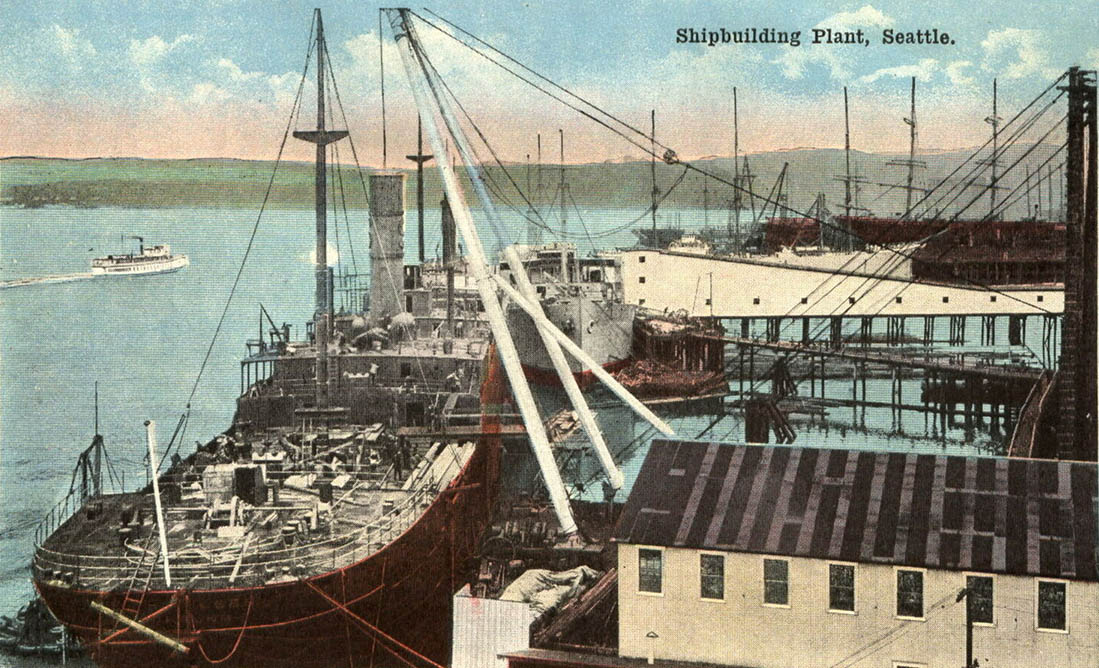
The residents of 14th Avenue East often made or increased their fortunes through regional and international trade. For some, Seattle was not a large enough market for their product to earn enough money for a home on Millionaire's Row. All five lumber company tycoons shipped their product via rail throughout the middle and western part of the country. Thomas Russell shipped his stone throughout the Pacific Coast, and even Hawaii. Samuel S. Hedges' Puget Sound Bridge and Dredging Company operated from the Mexican border to Alaska, the Aleutian Islands, and the Arctic. Nathan Eckstein's and Anson S. Burwell's companies – Schwabacher Brothers and Seattle Hardware Company – shipped to multiple states and even Asia. Henry Kleinberg shipped his grain throughout the Puget Sound region and to Japan. Elbridge A. Stuart's Carnation Milk products sold internationally. Alex Baillie was resident partner, and then president of Balfour, Guthrie, & Co., an international shipper. David E. Skinner and William Edris built the ships that carried trade. Baillie and Eckstein actively advocated a larger role for Seattle as an international port. Hedges built part of that port. A book published by the Seattle Times in 1900, Seattle and the Orient, had the goal of "introducing ourselves to the people doing business in Siberia, China, Japan, the China Archipelago, the Phillippines [sic] and Hawaii, and to eventually open a way by which closer trade relations may be promoted," and it featured articles not only on the Seattle Hardware Company, Schwabacher Brothers & Co., Schwabacher Hardware, Port Blakely Mill, Kerry Mill, but oddly enough also articles on the Moore Investment Company and Fred Rice Rowell.
4. The First Great Suburban Migration
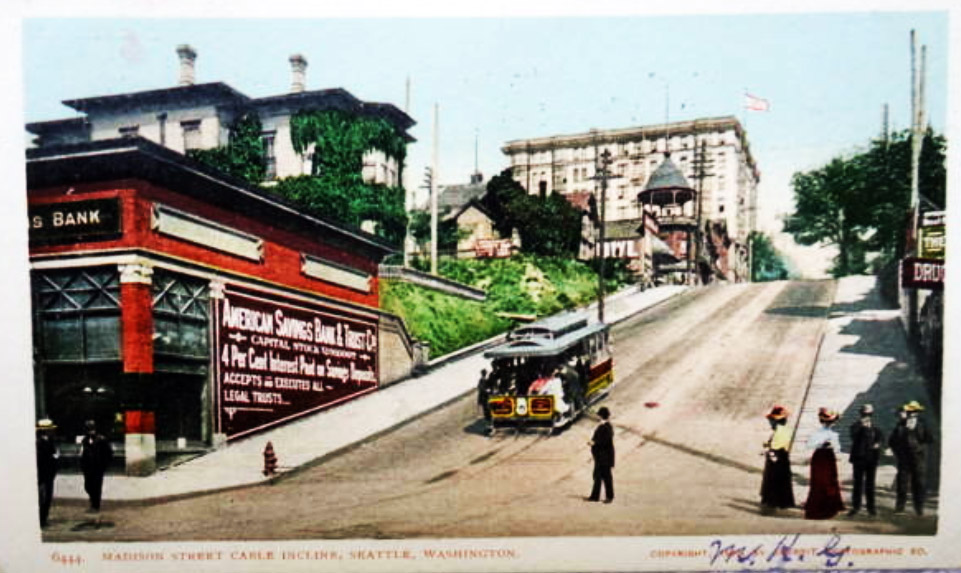
The small settlement of Seattle turned into a village, then a town, and finally a city. As the business district grew, residents moved further from Seattle's central core. As the residents' affluence grew, they wanted larger homes with more land. New streetcar lines allowed residents to more readily commute between their businesses and the "streetcar suburbs". James A. Moore promised that no lot on Capitol Hill would be more than a two minute walk from a streetcar line. He also paved the streets and put in sidewalks before selling the lots, so that Capitol Hill was seen as a retreat from the dirty and dusty city. Moore's Capitol Hill lots were advertised as "the last of strictly first class residential property in Seattle". Affluent individuals chose to build their homes near one another, and form their own little enclaves. The movement of residents towards the periphery of the city, motivated the acquisition and development of parks by the city, including Volunteer Park, which is key to this district. These trends, though not unique to the development of Millionaire's Row, all contributed to it. Of course, over time, land that was essentially an early suburb, became engulfed by the city. Capitol Hill is now one of the most densely populated areas of the city.
5. The City Beautiful Movement and the Olmsted Plan for Seattle
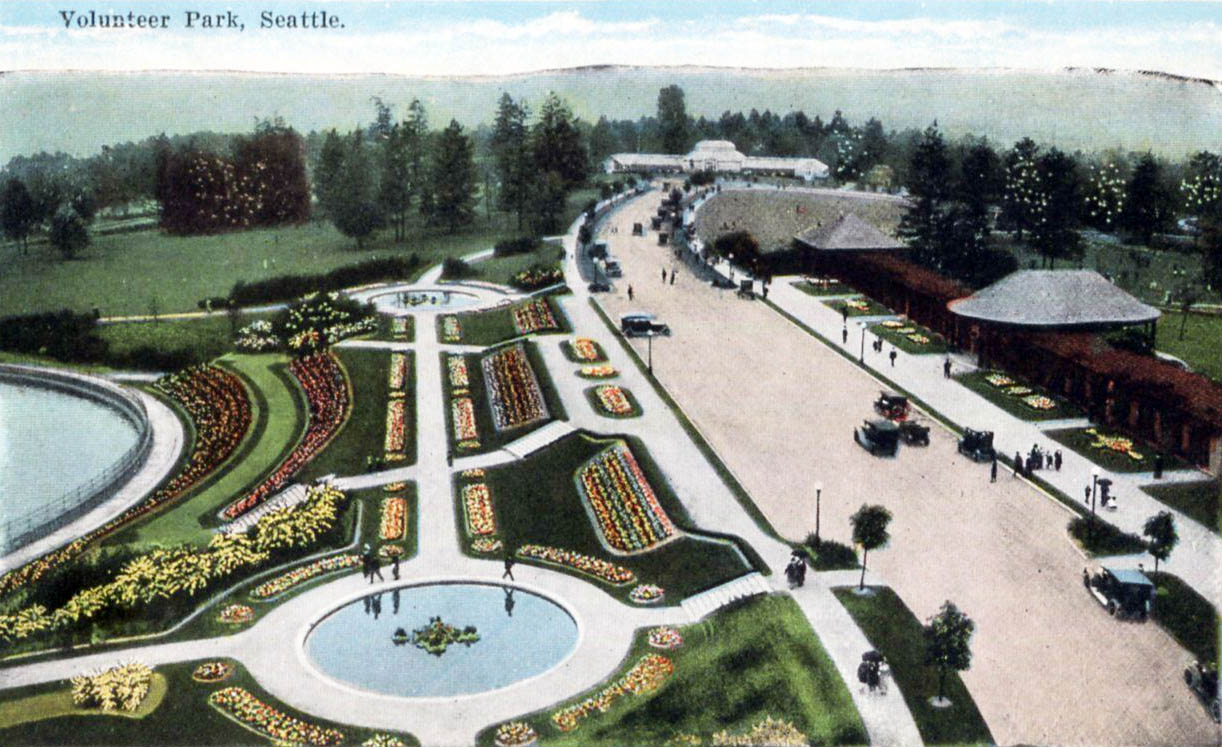
At the beginning of the 20th Century, a group of prominent building architects, landscape architects, and urban planners formed The City Beautiful Movement. They believed that good urban design could not only be aesthetic, but could make the residents more content and better citizens. The Olmsted Family was closely associated with this movement. The Olmsted Brothers, Frederick Law Olmsted Jr. and John Charles Olmsted who created the grand plan for Seattle's parks, wanted to create a calming retreat from the city's bustling intensity, that would make people happier and more mentally fit.
The Olmsted Brothers envisioned a series of parks, connected by boulevards, creating an "emerald necklace" for Seattle. Volunteer Park, at the top of Capitol Hill, is often considered the crown jewel of that necklace. As part of the Olmsted Plan initiated in 1903, 14th Avenue East (where prominent residences were already being built), would form a grand entrance to the park. The park influenced the street in several ways. The water tower / observation deck specified in the plan created a landmark to cap the street. The formal plantings at the entrance to the park created an elegant transition into 14th Avenue East. The aesthetics of the park and the entrance off of 14th Avenue East influenced the formality of the street, and the homes yet to be built. High-profile visitors like President Harding, who rode down the street to enter Volunteer Park, further increased its status and formality. But the converse is also true. The aesthetics of Millionaire's row led the Olmsted Brothers to design Volunteer Park as the most formal of Seattle parks, with its decorous plantings, lily ponds, well-manicured lawns, and conservatory.
6. The Creation of Volunteer Parkway

When the residents of the street decided to turnover its management to the city in 1924, the parks system took ownership of the street and trees to maintain the grand entrance to the park that was the original intent of the Olmsted Brothers. Volunteer Parkway is defined to be 14th Avenue East from East Prospect Street to approximately 100 feet south of East Roy Street, with an additional 90-120 feet along streets intersecting 14th. The existence of Volunteer Parkway and the park ownership of the trees has helped maintain the integrity of the treescape (an integral component of the City Beautiful concept), as well as the integrity of the street over the course of its long life.